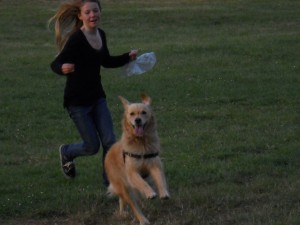![openphotonet_IMG_0772[1]](http://www.emergriskreduction.com/wp-content/uploads/2013/07/openphotonet_IMG_07721.jpg) I stood at the water’s edge in the Ninth Ward of downtown New Orleans. This was several days after Hurricane Katrina had caused its havoc along the Gulf Coast. Before me was a flotilla of small boats, all with one purpose. The “Pet Rescue” was in full swing. I had never witnessed this before, despite numerous disaster responses in Africa, Latin America, and Asia. Animals are important in the less developed nations of the world, but not a priority during a response. But this was North America and before my eyes, I witnessed that animals were a priority.
I stood at the water’s edge in the Ninth Ward of downtown New Orleans. This was several days after Hurricane Katrina had caused its havoc along the Gulf Coast. Before me was a flotilla of small boats, all with one purpose. The “Pet Rescue” was in full swing. I had never witnessed this before, despite numerous disaster responses in Africa, Latin America, and Asia. Animals are important in the less developed nations of the world, but not a priority during a response. But this was North America and before my eyes, I witnessed that animals were a priority.
I have done considerable reading on this subject since Katrina. I am no longer a skeptic. A section of my website is dedicated to Animals and Disaster, with an emphasis on family pets. The reality is that 25-33% of households surveys say they would not evacuate without their pets. They are willing to endanger their lives after a disaster due to this animal attachment. The reality is that pets are members of the family, as much as any son or daughter. We could never imagine leaving behind a child – why should we be shocked at those who refuse to abandon an animal family member?
 My daughter has a Golden Retriever, so I can relate. The animal attachment is not economic, although it could be for some animals, i.e. farm or ranch. Her attachment is fully emotional. But this is enough. As an emergency responder, how can I argue with a pet owner at the moment of leaving his or her home. The decision must be made ahead of time. And the preparation must be made ahead of time.
My daughter has a Golden Retriever, so I can relate. The animal attachment is not economic, although it could be for some animals, i.e. farm or ranch. Her attachment is fully emotional. But this is enough. As an emergency responder, how can I argue with a pet owner at the moment of leaving his or her home. The decision must be made ahead of time. And the preparation must be made ahead of time.
A detailed pet response is covered on other pages of this website. Put together a Pet Disaster Kit lasting several days. This kit is important for both ‘sheltering in place’ or as a pet ‘grab-and-go’ bag for evacuating. It should include water, pet food, treats. For sanitation, paper towels, soap, disinfectant, plastic bags for waste. For safety and comfort, an extra collar and leash, carrier, grooming supplies, blanket, and favourite chews or toys. Keep this kit in an easy-to-access place. Keep pet papers current: vaccination records, photos, perhaps even some ‘lost posters’ in case your love goes missing in the chaos. Note that a veterinarian can implant a microchip or a tattoo for easy ID.
Pet consideration should be an additional entry in your general Evacuation Plan. Ask “What is required to care for Fluffy or Jazz for several days?” A challenge may be sheltering. Agencies that operate emergency shelters still default to housing people first, and will consider owner/pet accommodation as secondary. This is changing due to the number of pets with families. Pet-friendly shelters are more common, especially in a large evacuation. Some motels and hotels have rooms set aside for families with pets. Of those that do, my inexact survey indicates that only a few rooms (say 10%) are set aside, and sometimes only for certain pets. (i.e. cats only) Almost all will levy an additional room charge. The demand for these rooms will be huge.
The alternative is leaving pets overnight in your van, pickup, or SUV – not an appealing choice, certainly not after a couple of nights. The EP community is slowly recognizing the quandary of pets and evacuation. Hopefully, solutions have been found in your![2002_1_29_156_1_OPL[1]](http://www.emergriskreduction.com/wp-content/uploads/2013/07/2002_1_29_156_1_OPL1.jpg) community. Meanwhile I encourage you, as a pet owner, to investigate in making your Plan. Call around to the lodging spots in your area. Is an RV and a campsite part of your Evacuation Plan? Have you considered friends or relatives? And if you are an owner who is comfortable with leaving your pet behind, be certain to leave ample water and food. For more, refer to the Disaster Preparedness for Pets section of this website.
community. Meanwhile I encourage you, as a pet owner, to investigate in making your Plan. Call around to the lodging spots in your area. Is an RV and a campsite part of your Evacuation Plan? Have you considered friends or relatives? And if you are an owner who is comfortable with leaving your pet behind, be certain to leave ample water and food. For more, refer to the Disaster Preparedness for Pets section of this website.
Half the battle is planning ahead for an evacuation before a disaster occurs. Pour yourself a cup of coffee and begin the process. If not for yourself, do it for your beloved furry one.
Thanks for reading.
Monty
Leave a Reply
You must be logged in to post a comment.